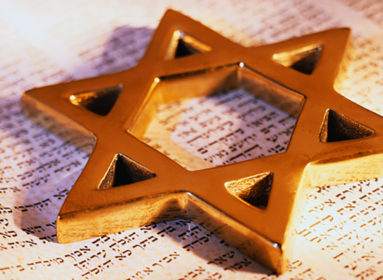
By Shlomo Riskin
Why does the heart of the Haggadah almost completely omit mention of Moses, limiting him to one “cameo” appearance? Moreover, that brief reference, a verse from our portion, Beshalach, dealing with the Splitting of the Reed Sea, seems to mention Moses in an incidental manner: “And when Israel saw the great hand that God had wielded against the Egyptians, the people feared God; they had faith in God and in His servant, Moses” [ibid. 14:31]. Certainly the leader of the Exodus should have merited more prominent billing in the Haggadah. After all, he was God’s “point man” in implementing the Exodus from Egypt!
That said, if the lone mention of Moses is in a verse about the Splitting of the Reed Sea, we must uncover its significance. Birth is intimately associated with water: the fetus is surrounded by amniotic fluid, the mother’s “water breaks” as a sign of imminent birth, and a person who converts to Judaism –whom the Talmud analogizes to a newborn – must completely immerse him/herself in a mikveh of water.
If the birth of the Jewish people occurred at the time of God’s Covenant Between the Pieces with Abraham [Gen. 15], then our rebirth took place at the Splitting of the Reed Sea. Paralleling our national birth and rebirth is the birth and rebirth of Moses. Carefully studying his emergence onto the stage of history, we find parallels to the miracle and message of the splitting of the Reed Sea inspiringly apparent.
The birth of Moses is described early in the Book of Exodus: born to parents from the Tribe of Levi, he is hidden for the first three months of his life. When keeping him hidden from Egyptian authorities is no longer sustainable, he is placed in an ark smeared with clay and pitch, with the ark set afloat “in the reeds” (ba-suf) of the Nile River [Ex. 2:1-3].
The rebirth of Moses begins when Pharaoh’s daughter goes down to bathe in the Nile. As her maidens walk along the river, the princess sees Moses’ basket among the reeds. She sends her maidservant, takes the Hebrew baby, has compassion for him, and allows Miriam, who had been carefully following the events, to find a Hebrew wet-nurse for him [ibid., v. 5-9].
Pharaoh’s daughter does not give birth to Moses, but she does save his life, in the process endangering her own life by defying her father’s decree to cast all Hebrew baby boys into the Nile. History confirms that totalitarian despots never hesitate to execute their closest family members who dare rebel against them. Pharaoh’s daughter thus emerges as a courageous heroine!
This fortunate rebirth culminates with the giving of a name: “And the lad grew, and [the wet-nurse, Yocheved, his biological mother] took him to Pharaoh’s daughter; he became the son (of Pharaoh’s daughter), and she named him Moshe, saying, “It is because I drew him out (meshi’tihu) from the water” [ibid., v. 10].
The most commonly accepted interpretation of the name “Moshe” is that he was drawn forth from the river, in the passive form. But if so, Hebrew grammar would dictate that his name be Mashui, referring to he who was drawn forth. Rabbi Naftali Tzvi Yehuda Berlin (a.k.a. “Netziv”) offers a sharp insight, noting a very different way of understanding these Biblical words: moshe is an Egyptian word that means “son”, as can be seen in the family name of Pharaohs, “Ramses”: “Ra” was the Egyptian sun god, and in Egyptian, “Mses” means “son”. Therefore, Pharaoh’s daughter names the baby “Moshe”, “son”. And it is not without cause that she has the right to call him her son. After all, having drawn him forth from the Nile River on pain of death, she has earned this right. Every biological mother puts her life on the line with every birth; and Pharaoh’s daughter endangered her life by going against her father’s decree and saving this Hebrew baby.
While his insight is compelling, it leaves us without a verbal connection between the Egyptian name “Moshe” and the Hebrew word, meshi’tihu, “I drew him out”. To solve this dilemma, the Torah employs a double-entendre: Moshe the son (in Egyptian), reborn in the midst of reeds, will decisively draw forth (moshe, in Hebrew) his people, the Israelites, at the Reed Sea, facilitating their rebirth.
This is why Moses’ lone appearance in the Haggadah occurs at the splitting of the Reed Sea. Far from merely citing a verse that happens to include Moses’ name, the Haggadah is alluding to that most profound parallel of the leader and his people both experiencing rebirth, Moses by Pharaoh’s daughter (in the reeds of the Nile), and the Jewish people by God at the Reed Sea.
And perhaps even more significant is what Moses and the Jewish people did with these additional opportunities of rebirth. From the shores of the Reed Sea, they journeyed to Sinai and received the Torah, becoming messengers of truly revolutionary teachings to the world, such as the moral obligations of universal freedom and human dignity that are as important today as they have ever been.
Rabbi Shlomo Riskin is chancellor of Ohr Torah Stone and chief rabbi of Efrat, Israel.








 Southern New England Jewish Ledger
Southern New England Jewish Ledger









